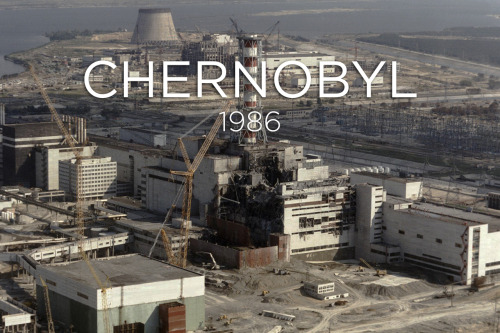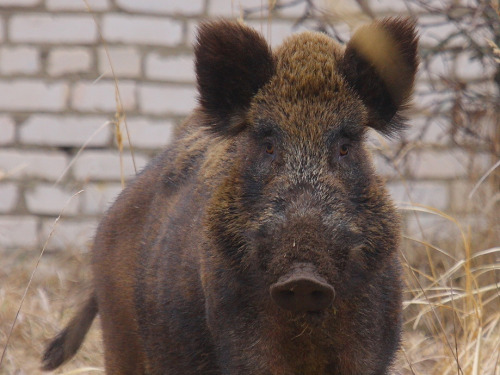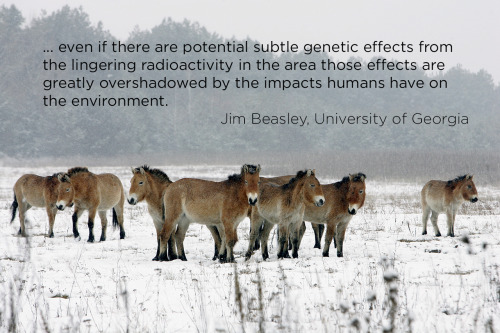It Is Easy To See Where We Are Heading – The Future Will Need Far Fewer Workers. Computers, Automation
It is easy to see where we are heading – the future will need far fewer workers. Computers, automation and robots will eliminate jobs in increasingly large numbers, and also apply downward wage pressure. Which is completely backwards from what could be happening if we designed society for the benefit of all. If the wealth were not concentrating, every worker would be benefiting from the increases in productivity created by all of this new technology. Wages would be rising and the work week would be shortening. Instead, all of the benefits are flowing straight to the 1% and everyone else is suffering.
This is where the idea of the Basic Income comes in. It is a standardized way of addressing the large scale unemployment that is coming soon, as well as simplifying welfare, retirement and disability payments, as well as making the productivity increases available to everyone in society instead of the elite few.
The idea is simple: everyone in society receives a regular income simply for being alive. The ultimate goal is for the Basic Income payment, by itself, to provide a comfortable living for every member of society without working.
More Posts from Dotmpotter and Others
The problem comes from people whose opinions are actually misconceptions. If you think vaccines cause autism you are expressing something factually wrong, not an opinion. The fact that you may still believe that vaccines cause autism does not move your misconception into the realm of valid opinion. Nor does the fact that many other share this opinion give it any more validity… You can be wrong or ignorant. It will happen. Reality does not care about your feelings. Education does not exist to persecute you. The misinformed are not an ethnic minority being oppressed. What’s that? Planned Parenthood is chopping up dead babies and selling them for phat cash? No, that’s not what actually happened. No, it’s not your opinion. You’re just wrong.
Yes, Your Opinion Can Be Wrong | Houston Press
This whole article.
Education does not exist to persecute you.
(via witch-boots)

Meet the architect who wants to return Mexico City to its ancient lakes
“The pre-Hispanic civilizations built a system of dams, in order to control the salt water and to bring clean water. But then the Spaniards, in order to conquer the city, broke the dams … They started to follow a European scheme, which didn’t match the geography. And we have followed that inherited inertia for the last 500 years.” || Read more in The Guardian

The Fracking Science Compendium by Physicians for Social Responsibility shows overwhelming harms. Learn more below:
http://concernedhealthny.org/compendium/ http://www.psr.org/resources/fracking-compendium.html


Digital mapping + solar = sustainable cities?
A new tool combines Google satellite imagery with light detection and ranging data, calculating the potential hourly solar energy production of a city.

Holy shit! The single reason Republicans have no right to exist is climate denial on behalf of energy companies.

“A bus map you often see is the same thickness and same color line for the whole network: It makes [agencies] look like they’ve got the whole place covered,” says Wiggins. “That’s to the benefit of them and not to the rider.”
Wiggins thinks transit maps designed around coverage ultimately harm the system as a whole. Instead of using the map to find a bus route that works for a particular trip, riders stick to one specific line whose schedule they know—avoiding the map altogether. The result is a ridership that ends up taking a car more than it otherwise might, and one that objects loudly when the agency proposes a system change that would force them to learn a new route.
“I think with a better map, it actually might facilitate people being able to let go a little bit,” he says. “It stops becoming ‘this is my route and this is what I cling to’ and more of a network you can relate to.”
How San Francisco Got Its New Rider-Friendly Transit Map







On April 26, 1986, a power surge caused an explosion at the Chernobyl Nuclear Power Plant near Pripyat, Ukraine. A large quantity of radioactive material was released.
On May 2, 1986, the Soviet government established a “Zone of Alienation” or “Exclusion Zone” around Chernobyl – a thousand square miles of “radioactive wasteland.” All humans were evacuated. The town of Pripyat was completely abandoned.
But the animals didn’t leave. And a new study, published this month in Current Biology, suggests they are doing fine. “None of our three hypotheses postulating radiation damage to large mammal populations at Chernobyl were supported by the empirical evidence,” says Jim Beasley, one of the researchers.
In fact, some of the populations have grown. These photos (mostly taken by Valeriy Yurko) come from the Belarusian side of the Exclusion Zone, and area called the Polessye State Radioecological Reserve. Kingfisher, elk, boar, baby spotted eagles, wild ponies, moose, rabbits, and wolves all make their home in the park. In some ways, human presence is worse for wildlife than a nuclear disaster.
Image credits:
1986 Chernobyl - ZUFAROV/AFP/Getty Images
Wildlife photos - Valeriy Yurko/Polessye State Radioecological Reserve
Ponies in winter - SERGEI SUPINSKY/AFP/Getty Images
It wrinkles my brain that Jupiter’s moon Europa has oceans that are sixty miles deep, while Earth’s oceans only reach seven miles deep at most. I’m willing to bet good money that there’s life in Europa’s oceans. Like five bucks. You hear me, NASA? I bet you five bucks that there’s life on Europa… Now that there’s money and reputation on the line, I bet they send a mission there real quick.
An EPIC View of Earth
“Look again at that dot. That’s here. That’s home. That’s us.”
Carl Sagan wrote those words in his book Pale Blue Dot: A Vision For The Human Future In Space. His now-famous ode to our home planet (listen to the full passage here, in animated form) is perhaps our most poignant and humble reminder of the exquisite beauty and shared fragility of this planet we call home.
NASA is now bringing us a daily reminder of that message, thanks to the EPIC camera (a very appropriately named camera, in my opinion) on board NOAA’s DSCOVR satellite. You can see some of its handiwork in the image sequence above.
DSCOVR’s official space job is to observe weather on and around the sun, to extend its mechanical finger into the solar wind and measure how strongly that stream of charged particles is gusting toward Earth. It does this job from a special spot in space called the L1 Lagrange point. If you were to draw a line between us and the sun, DSCOVR would be sitting along it, like so (not to scale):

That’s a convenient place to put a spacecraft, especially one whose job it is to stare at the sun. See, DSCOVR is nestled inside a pocket where it’s tugged equally by the Earth’s and Sun’s gravity, like a stalemate in an orbital game of tug-o-war. Gravity does all the work, and the spacecraft doesn’t need to maneuver much to stay in position. There’s a few of these gravity-neutral Lagrange points out there, as you can tell in the image above, and we’ve got spacecraft residing at all of them.
As a side effect of its sun-staring mission, DSCOVR’s backside happens to be looking back at Earth full-time. In a way, I think that makes it a different sort of moon.
NASA doesn’t like to let any opportunity go un-scienced, of course, so they decided to slap a camera on DSCOVR’s rear, the one named EPIC, and use their stable perch to keep a regular eye on us. Good lookin’ out, NASA.
A little change in perspective can do a planet good. In 1990, from a vantage point beyond Pluto, Voyager 1 turned its cameras back toward home to take one last look, giving us the image that inspired Carl Sagan’s ode to ol’ Dotty Blue:

This was not an easy shot to take. Voyager’s camera wasn’t the fancy digital type like most of us have in our phones. It was essentially an old-fashioned black and white tube TV in reverse, relying on colored filters held in front of the camera to highlight different wavelengths of light. Voyager stored its image data on magnetic tape, and each of the shots took more than five hours to reach Earth. Sagan and NASA’s planetary science team had to practically move the heavens (since they were unable to move the Earth) in order to take that picture.
Now consider the effect this picture has had. That’s home. That’s us. Even if you weren’t born in 1990, everyone and everything that made you is in and on that hazy blue speck. I hope you never lose sight of how amazing it is to view our planet from this perspective.
Luckily, you can get a reminder every day. The DSCOVR satellite is now sending roughly a picture an hour back to Earth, 24/7/365. That’s a near real-time view of our home. Go take a look. It’s pretty epic.
To see a daily look at what a day on Earth looks like, check out EPIC’s daily updates here.



Wanted: Shredder for five million tires dumped in Spain
Spanish authorities are struggling to dispose of five million tires dumped on a site close to a housing development north of Toledo. The 90,000 tons’ worth of tires have been dumped there since 2002.
Environmentalists say that should a fire break out, it could not be extinguished with water and would have to be smothered with earth. In the event of a fire, Madrid’s main airport would likely have to be shut down and an estimated 11,000 homes evacuated. | Read more
-
 leftraccoon reblogged this · 8 years ago
leftraccoon reblogged this · 8 years ago -
 midwestsunset402 liked this · 9 years ago
midwestsunset402 liked this · 9 years ago -
 dotmpotter reblogged this · 9 years ago
dotmpotter reblogged this · 9 years ago -
 urbanoceanix reblogged this · 9 years ago
urbanoceanix reblogged this · 9 years ago -
 urbanoceanix reblogged this · 10 years ago
urbanoceanix reblogged this · 10 years ago -
 sudwalla liked this · 10 years ago
sudwalla liked this · 10 years ago -
 kaprekar reblogged this · 10 years ago
kaprekar reblogged this · 10 years ago -
 disabledbyculture-blog liked this · 10 years ago
disabledbyculture-blog liked this · 10 years ago -
 thelittlebirdthatkeptsomanywarm liked this · 10 years ago
thelittlebirdthatkeptsomanywarm liked this · 10 years ago -
 lammybammyfofammy reblogged this · 10 years ago
lammybammyfofammy reblogged this · 10 years ago -
 luxembourgist-kahloist liked this · 10 years ago
luxembourgist-kahloist liked this · 10 years ago -
 maybeyoushouldtryit liked this · 10 years ago
maybeyoushouldtryit liked this · 10 years ago -
 shhdontlook reblogged this · 10 years ago
shhdontlook reblogged this · 10 years ago -
 shhdontlook liked this · 10 years ago
shhdontlook liked this · 10 years ago -
 violsva liked this · 10 years ago
violsva liked this · 10 years ago -
 terpsikeraunos reblogged this · 10 years ago
terpsikeraunos reblogged this · 10 years ago -
 terpsikeraunos liked this · 10 years ago
terpsikeraunos liked this · 10 years ago -
 ajax-daughter-of-telamon reblogged this · 10 years ago
ajax-daughter-of-telamon reblogged this · 10 years ago -
 ajax-daughter-of-telamon liked this · 10 years ago
ajax-daughter-of-telamon liked this · 10 years ago -
 simplyahuman-blog liked this · 10 years ago
simplyahuman-blog liked this · 10 years ago -
 jewishandalite-blog reblogged this · 10 years ago
jewishandalite-blog reblogged this · 10 years ago -
 sociolab reblogged this · 10 years ago
sociolab reblogged this · 10 years ago -
 togrof liked this · 10 years ago
togrof liked this · 10 years ago -
 melzwhimzy liked this · 10 years ago
melzwhimzy liked this · 10 years ago -
 vortexanomaly liked this · 10 years ago
vortexanomaly liked this · 10 years ago -
 antycrist reblogged this · 10 years ago
antycrist reblogged this · 10 years ago -
 anotherword liked this · 10 years ago
anotherword liked this · 10 years ago -
 scottsantens liked this · 10 years ago
scottsantens liked this · 10 years ago -
 professorblind reblogged this · 10 years ago
professorblind reblogged this · 10 years ago -
 eviltessmacher reblogged this · 10 years ago
eviltessmacher reblogged this · 10 years ago -
 zmueri reblogged this · 10 years ago
zmueri reblogged this · 10 years ago -
 zmueri liked this · 10 years ago
zmueri liked this · 10 years ago -
 nobodysradiostation liked this · 10 years ago
nobodysradiostation liked this · 10 years ago -
 insist-on-resisting reblogged this · 10 years ago
insist-on-resisting reblogged this · 10 years ago -
 thedarkitalian reblogged this · 10 years ago
thedarkitalian reblogged this · 10 years ago -
 thedarkitalian liked this · 10 years ago
thedarkitalian liked this · 10 years ago -
 30-somethingfiasco reblogged this · 10 years ago
30-somethingfiasco reblogged this · 10 years ago -
 half-diminished liked this · 10 years ago
half-diminished liked this · 10 years ago -
 blissandzen liked this · 10 years ago
blissandzen liked this · 10 years ago -
 altidude liked this · 10 years ago
altidude liked this · 10 years ago